| Part of a series on |
| World trade |
|---|
 |
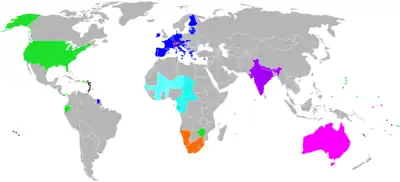
A currency union (also known as monetary union) is an intergovernmental agreement that involves two or more states sharing the same currency. These states may not necessarily have any further integration (such as an economic and monetary union, which would have, in addition, a customs union and a single market).
There are three types of currency unions:
- Informal – unilateral adoption of a foreign currency.[1]
- Formal – adoption of foreign currency by virtue of bilateral or multilateral agreement with the monetary authority, sometimes supplemented by issue of local currency in currency peg regime.
- Formal with common policy – establishment by multiple countries of a common monetary policy and monetary authority for their common currency.
The theory of the optimal currency area addresses the question of how to determine what geographical regions should share a currency in order to maximize economic efficiency.[2]
Advantages and disadvantages
Implementing a new currency in a country is always a controversial topic because it has both many advantages and disadvantages. New currency has different impacts on businesses and individuals, which creates more points of view on the usefulness of currency unions. As a consequence, governmental institutions often struggle when they try to implement a new currency, for example by entering a currency union.
Advantages
- A currency union helps its members strengthen their competitiveness on a global scale and eliminate the exchange rate risk.
- Transactions among member states can be processed faster and their costs decrease since fees to banks are lower.[3]
- Prices are more transparent and so are easier to compare, which enables fair competition.
- The probability of a monetary crisis is lower. The more countries there are in the currency union, the more they are resistant to crisis.
Disadvantages
- The member states lose their sovereignty in monetary policy decisions. There is usually an institution (such as a central bank) that takes care of the monetary policymaking in the whole currency union.
- The risk of asymmetric "shocks" may occur. The criteria set by the currency union are never perfect, so a group of countries might be substantially worse off while the others are booming.
- Implementing a new currency causes high financial costs. Businesses and also single persons have to adapt to the new currency in their country, which includes costs for the businesses to prepare their management, employees, and they also need to inform their clients and process plenty of new data.
- Unlimited capital movement may cause moving most resources to the more productive regions at the expense of the less productive regions. The more productive regions tend to attract more capital in goods and services, which might avoid the less productive regions.[4][5]
Convergence and divergence
Convergence in terms of macroeconomics means that countries have a similar economic behaviour (similar inflation rates and economic growth). It is easier to form a currency union for countries with more convergence as these countries have the same or at least very similar goals. The European Monetary Union (EMU) is a contemporary model for forming currency unions. Membership in the EMU requires that countries follow a strictly defined set of criteria (the member states are required to have a specific rate of inflation, government deficit, government debt, long-term interest rates and exchange rate). Many other unions have adopted the view that convergence is necessary, so they now follow similar rules to aim the same direction.
Divergence is the exact opposite of convergence. Countries with different goals are very difficult to integrate in a single currency union. Their economic behaviour is completely different, which may lead to disagreements. Divergence is therefore not optimal for forming a currency union.[6]
History
The first currency unions were established in the 19th century. The German Zollverein came into existence in 1834, and by 1866, it included most of the German states. The fragmented states of the German Confederation agreed on common policies to increase trade and political unity.
The Latin Monetary Union, comprising France, Belgium, Italy, Switzerland, and Greece, existed between 1865 and 1927, with coinage made of gold and silver. Coins of each country were legal tender and freely interchangeable across the area. The union's success made other states join informally.
The Scandinavian Monetary Union, comprising Sweden, Denmark, and Norway, existed between 1873 and 1905 and used a currency based on gold. The system was dissolved by Sweden in 1924.[7]
A currency union among the British colonies and protectorates in Southeast Asia, namely the Federation of Malaya, North Borneo, Sarawak, Singapore and Brunei was established in 1952. The Malaya and British Borneo dollar, the common currency for circulation was issued by the Board of Commissioners of Currency, Malaya and British Borneo from 1953 until 1967. Following the cessation of the common currency arrangement, Malaysia (the combination of Federation of Malaya, North Borneo, Sarawak), Singapore and Brunei began issuing their own currencies. Contemporarily, a currency reunion of these countries might still be feasible based on the findings of economic convergence.[8][9]
List of currency unions
Existing
Note: Every customs and monetary union and economic and monetary union also has a currency union.
![]() Zimbabwe is theoretically in a currency union with four blocs as the South African rand, Botswana pula, British pound and US dollar freely circulate. The US Dollar was, until 2016, official tender.[17]
Zimbabwe is theoretically in a currency union with four blocs as the South African rand, Botswana pula, British pound and US dollar freely circulate. The US Dollar was, until 2016, official tender.[17]
Additionally, the autonomous and dependent territories, such as some of the EU member state special territories, are sometimes treated as separate customs territory from their mainland state or have varying arrangements of formal or de facto customs union, common market and currency union (or combinations thereof) with the mainland and in regards to third countries through the trade pacts signed by the mainland state.[18]
Currency union in Europe
The European currency union is a part of the Economic and Monetary Union of the European Union (EMU). EMU was formed during the second half of the 20th century after historic agreements, such as Treaty of Paris (1951), Maastricht Treaty (1992). In 2002, the euro, a single European currency, was adopted by 12 member states. Currently, the Eurozone has 20 member states. The other members of the European Union are required to adopt the euro as their currency (except for Denmark, which has been given the right to opt out), but there has not been a specific date set. The main independent institution responsible for stability of the euro is the European Central Bank (ECB). Together with 15 national banks it forms the European System of Central Banks. The Governing Board consists of the Executive Committee of the ECB and the governors of individual national banks, and determines the monetary policy, as well as short-term monetary objectives, key interest rates and the extent of monetary reserves.[19]
Planned
| Community | Currency | Region | Target date | Notes |
|---|---|---|---|---|
| East African shilling | Africa | 2012 (not met), 2015 (not met), 2024[20] | ||
| West African Monetary Zone | Eco | Africa | 2027 | Inside Economic Community of West African States, planned to eventually merge with West African franc |
| ASEAN+3 | Asian Monetary Unit | Asia | ? | a free trade agreements matrix partially established |
| Khaleeji | Arabian Peninsula | ? | Oman and the United Arab Emirates do not intend to adopt the currency at first but will do at a later date. | |
| Afro or Afriq | Africa | 2028[21] | Planned for 2028 or later | |
| Brazil, Argentina and possibly other countries | Sur | Latin America | ? | As Financial Times reports, Brazil and Argentina will announce in January 2023 that they are starting preparatory work on a common currency "Sur" (South). The initiative would later be extended to invite other Latin American nations.[22] |
Disbanded
- between
 Bahrain and
Bahrain and  Abu Dhabi using the Bahraini dinar
Abu Dhabi using the Bahraini dinar - between
.svg.png.webp) Bahrain,
Bahrain,  Kuwait,
Kuwait,  Oman,
Oman, .svg.png.webp) Qatar and the
Qatar and the .svg.png.webp) Trucial States, using the Gulf rupee from 1959 until 1966
Trucial States, using the Gulf rupee from 1959 until 1966 - between
.svg.png.webp) Aden,
Aden, 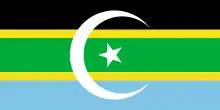 South Arabia,
South Arabia, .svg.png.webp) Bahrain,
Bahrain, .svg.png.webp) Kenya,
Kenya,  Kuwait,
Kuwait,  Oman,
Oman, .svg.png.webp) Qatar,
Qatar, .svg.png.webp) British Somaliland,
British Somaliland, .svg.png.webp) the Trucial States,
the Trucial States,  Uganda,
Uganda,  Zanzibar and
Zanzibar and  British India (later independent
British India (later independent  India) using the Indian rupee
India) using the Indian rupee - between
.svg.png.webp) Belgium and the
Belgium and the  Grand-Duchy of Luxemburg (Belgium-Luxembourg Economic Union) using the Belgian/Luxembourgish franc from 1921 to the Euro
Grand-Duchy of Luxemburg (Belgium-Luxembourg Economic Union) using the Belgian/Luxembourgish franc from 1921 to the Euro - between
 British India and the
British India and the .svg.png.webp) Straits Settlements (1837–1867) using the Indian rupee
Straits Settlements (1837–1867) using the Indian rupee - between
 Czech Republic and
Czech Republic and  Slovakia (briefly from January 1, 1993 to February 8, 1993) using the Czechoslovak koruna
Slovakia (briefly from January 1, 1993 to February 8, 1993) using the Czechoslovak koruna - between
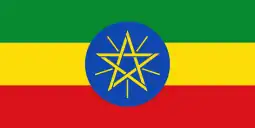 Ethiopia and
Ethiopia and  Eritrea using the Ethiopian birr
Eritrea using the Ethiopian birr - between
 France,
France,  Monaco, and
Monaco, and  Andorra using the French franc
Andorra using the French franc - between
.svg.png.webp) Austria-Hungary and
Austria-Hungary and  Liechtenstein using the Austro-Hungarian krone
Liechtenstein using the Austro-Hungarian krone - between the Eastern Caribbean,
.svg.png.webp) Jamaica,
Jamaica, .svg.png.webp) Barbados,
Barbados, .svg.png.webp) Trinidad and Tobago and
Trinidad and Tobago and .svg.png.webp) British Guiana using the British West Indies dollar
British Guiana using the British West Indies dollar - between the Eastern Caribbean,
.svg.png.webp) Barbados,
Barbados, .svg.png.webp) Trinidad and Tobago and
Trinidad and Tobago and .svg.png.webp) British Guiana using the Eastern Caribbean dollar
British Guiana using the Eastern Caribbean dollar - between
 Italy,
Italy, .svg.png.webp) Vatican City, and
Vatican City, and 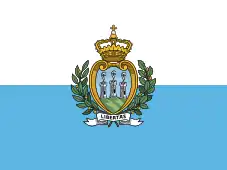 San Marino using the Italian lira
San Marino using the Italian lira - between
 Jamaica and the
Jamaica and the  Cayman Islands using the Jamaican pound and later Jamaican dollar
Cayman Islands using the Jamaican pound and later Jamaican dollar - between
.svg.png.webp) Kenya,
Kenya,  Uganda, and
Uganda, and  Zanzibar using the East African rupee
Zanzibar using the East African rupee - between
.svg.png.webp) Kenya,
Kenya,  Uganda, and
Uganda, and  Zanzibar (and later
Zanzibar (and later .svg.png.webp) Tanganyika) using the East African florin
Tanganyika) using the East African florin - between
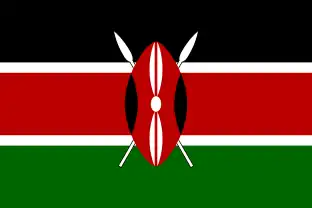 Kenya,
Kenya, .svg.png.webp) Tanganyika and
Tanganyika and  Zanzibar (later merged as
Zanzibar (later merged as 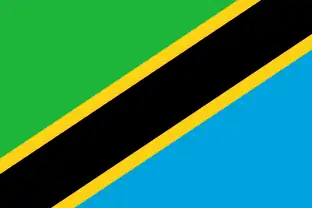 Tanzania),
Tanzania), 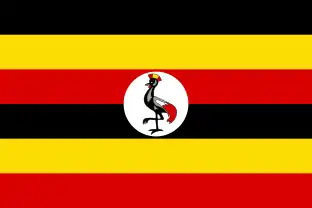 Uganda,
Uganda,  South Arabia,
South Arabia, .svg.png.webp) British Somaliland and
British Somaliland and  Italian Somaliland using the East African shilling
Italian Somaliland using the East African shilling - Latin Monetary Union (1865–1927), initially between
.svg.png.webp) France,
France, .svg.png.webp) Belgium,
Belgium, _crowned.svg.png.webp) Italy and
Italy and .svg.png.webp) Switzerland, and later involving
Switzerland, and later involving .svg.png.webp) Greece,[23]
Greece,[23]  Romania,
Romania, .svg.png.webp) Spain and other countries.
Spain and other countries. - between
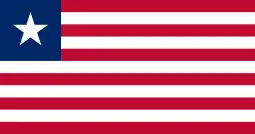 Liberia and the
Liberia and the .svg.png.webp) United States using the United States dollar
United States using the United States dollar - between
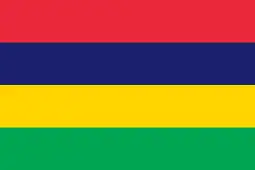 Mauritius and
Mauritius and  Seychelles using the Mauritian rupee
Seychelles using the Mauritian rupee - between
.svg.png.webp) Nigeria,
Nigeria, .svg.png.webp) the Gambia,
the Gambia, .svg.png.webp) Sierra Leone,
Sierra Leone, .svg.png.webp) the Gold Coast and
the Gold Coast and  Liberia using the British West African pound
Liberia using the British West African pound - between
.svg.png.webp) Prussia and the North German states (1838–1857) using the North German thaler
Prussia and the North German states (1838–1857) using the North German thaler - between
.svg.png.webp) Russia and the
Russia and the .svg.png.webp) former Soviet republics (1991–1993) using the Soviet ruble
former Soviet republics (1991–1993) using the Soviet ruble - between
 Qatar and all the emirates of the
Qatar and all the emirates of the  United Arab Emirates, except Abu Dhabi using the Qatari and Dubai riyal
United Arab Emirates, except Abu Dhabi using the Qatari and Dubai riyal - between
.svg.png.webp) Saudi Arabia and
Saudi Arabia and .svg.png.webp) Qatar using the Saudi riyal
Qatar using the Saudi riyal - between
 Western Samoa and
Western Samoa and  New Zealand using the New Zealand pound
New Zealand using the New Zealand pound - Scandinavian Monetary Union (1870s until 1924), between
 Denmark,
Denmark,  Norway and
Norway and  Sweden[23]
Sweden[23] - between the
 Solomon Islands,
Solomon Islands, 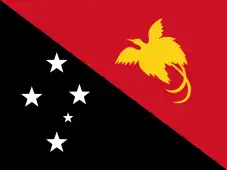 Papua New Guinea and
Papua New Guinea and .svg.png.webp) Australia using the Australian dollar
Australia using the Australian dollar - between
.svg.png.webp) Australia,
Australia,  Papua,
Papua, 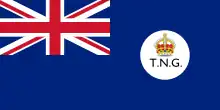 New Guinea,
New Guinea,  Nauru,
Nauru, .svg.png.webp) the Solomon Islands, and
the Solomon Islands, and .svg.png.webp) the Gilbert and Ellice Islands using the Australian pound
the Gilbert and Ellice Islands using the Australian pound - between
.svg.png.webp) Bavaria,
Bavaria, .svg.png.webp) Baden,
Baden,  Württemberg,
Württemberg,  Frankfurt, and
Frankfurt, and  Hohenzollern using the South German guilder
Hohenzollern using the South German guilder - between
 Spain and
Spain and  Andorra using the Spanish peseta
Andorra using the Spanish peseta - between
 Trinidad and Tobago and
Trinidad and Tobago and 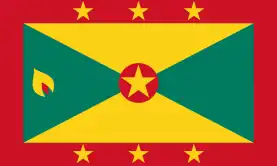 Grenada using the Trinidad and Tobago dollar
Grenada using the Trinidad and Tobago dollar - between
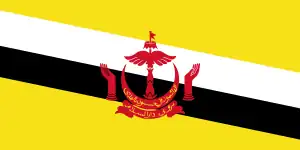 Brunei,
Brunei,  Malaysia, and
Malaysia, and  Singapore (1953–1967) using the Malaya and British Borneo dollar
Singapore (1953–1967) using the Malaya and British Borneo dollar - between
.svg.png.webp) Cambodia,
Cambodia, .svg.png.webp) Laos,
Laos,  Guangzhouwan,
Guangzhouwan, .svg.png.webp) Annam,
Annam,  Tonkin, and
Tonkin, and 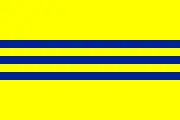 Cochinchina (later
Cochinchina (later  Vietnam) between 1885 and 1952 using the French Indochinese piastre
Vietnam) between 1885 and 1952 using the French Indochinese piastre - between
.svg.png.webp) South Africa,
South Africa, .svg.png.webp) South West Africa, and
South West Africa, and  Bechuanaland (later independent
Bechuanaland (later independent  Botswana) using the South African rand
Botswana) using the South African rand - between
.svg.png.webp) Egypt,
Egypt,  Anglo-Egyptian Sudan, and
Anglo-Egyptian Sudan, and .svg.png.webp) Mandatory Palestine (until 1926) using the Egyptian pound
Mandatory Palestine (until 1926) using the Egyptian pound - between
 West Germany and
West Germany and 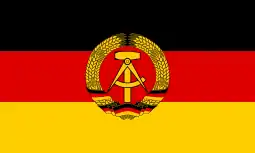 East Germany between 1 July 1990 and 3 October 1990, as part of a temporary, so-called "Monetary, Economic and Social Union" prior to German reunification.
East Germany between 1 July 1990 and 3 October 1990, as part of a temporary, so-called "Monetary, Economic and Social Union" prior to German reunification. - between what ultimately became the
 Republic of Ireland and the
Republic of Ireland and the  United Kingdom, between 1928 and 1979. The Irish Pound was held at exactly the same value as Sterling for this period, although it was not accepted for payments in the UK.
United Kingdom, between 1928 and 1979. The Irish Pound was held at exactly the same value as Sterling for this period, although it was not accepted for payments in the UK. - between the
.svg.png.webp) Empire of Japan and the
Empire of Japan and the .svg.png.webp) Korean Empire during the latter's forced protectorate (1905-1910) and occupation (1910-1945) by Japan using the Japanese yen and Korean yen.
Korean Empire during the latter's forced protectorate (1905-1910) and occupation (1910-1945) by Japan using the Japanese yen and Korean yen.
Never materialized
- proposed Pan-American monetary union – abandoned in the form proposed by Argentina
- proposed monetary union between the
 United Kingdom and
United Kingdom and  Norway using the pound sterling during the late 1940s and early 1950s
Norway using the pound sterling during the late 1940s and early 1950s - proposed gold-backed, pan-African monetary union put forward by Muammar Gaddafi prior to his death
See also
References
- ↑ "World Bank" (PDF). WorldBank.org. Retrieved 30 April 2019.
- ↑ Hafner, Kurt A.; Jager, Jennifer. "The Optimum Currency Area Theory and the EMU". Intereconomics. Retrieved 1 April 2021.
- ↑ Global Economy, The. "Currency unions, Monetary unions". The Global Economy. Naven Valev. Retrieved 1 April 2021.
- ↑ "Study". Study.com. Retrieved 30 April 2019.
- ↑ "Global Financial Integrity". gfintegrity.org. 20 June 2011. Retrieved 30 April 2019.
- ↑ Enoch, Charles; Krueger, Russell. "Currency unions: key variables, definitions, measurement, and statistical improvement" (PDF). Bank for International Settlements. Retrieved 30 April 2019.
- ↑ Bolton, Sally (10 December 2001). "History of currency unions". The Guardian. Retrieved 30 April 2019.
- ↑ "History of Money in Malaysia: Colonial Notes & Coins". Bank Negara Malaysia. 2010. Archived from the original on 22 July 2011. Retrieved 5 July 2021.
- ↑ Quah, C. H.; Ho, Y. J. (2020). "Economic Feasibility of Malaysia and Singapore-Brunei Monetary Reunion: A Scrutiny during Major Financial Crises". Applied Economics Journal. 27 (1): 23–51.
- ↑ Anguilla and Montserrat are members of OECS currency union, but not of the CSME.
- ↑ To all intents and purposes a monetary union. They are the last two nations whose dollars have remained at par and mutually interchangeable since the days when the Spanish Dollar was the united currency of large areas of the New World and Southeast Asia.
- ↑ alongside the ngultrum
- ↑ Not official, but freely used as a tender in Nepal, due to primarily the economic flux with India and also the instability caused by that country's civil war.
- ↑ Zacharia, Janine (2010-05-31). "Palestinian officials think about replacing Israeli shekel with Palestine pound". The Washington Post and Times-Herald. ISSN 0190-8286. Retrieved 2018-08-22.
- ↑ Cobham, David (2004-09-15). "Alternative currency arrangements for a new Palestinian state" (PDF). In David Cobham (ed.). The Economics of Palestine: Economic Policy and Institutional Reform for a Viable Palestine State. London: Routledge. ISBN 9780415327619. Retrieved 2018-08-22.
- ↑ "Compact- Title 02 Article 05". www.fsmlaw.org.
- ↑ "Zimbabwe abandons its currency". 2009-01-29. Retrieved 2019-10-15.
- ↑ EU Overseas countries and some other territories participate partially in the EU single market per part four of the Treaty Establishing the European Community Archived 2013-11-16 at the Wayback Machine; Some EU Outermost regions and other territories use the Euro of the currency union, others are part of the customs union; some participate in both unions and some in neither.
Territories of the United States, Australian External Territories and Realm of New Zealand territories share the currency and mostly also the market of their respective mainland state, but are generally not part of its customs territory. - ↑ "European Union". Europa.eu. Retrieved 30 April 2019.
- ↑ Asongu, Simplice; Nwachukwu, Jacinta; Tchamyou, Vanessa (2016-08-01). "A Literature Survey on Proposed African Monetary Unions" (PDF). Journal of Economic Surveys. 31 (3): 878–902. doi:10.1111/joes.12174. ISSN 1467-6419. S2CID 38454408.
- ↑ "A common currency at a later stage of Africa's economic integration". 30 November 2001.
- ↑ "Brazil and Argentina to begin preparations for common currency, Financial Times reports". Reuters. 2023-01-22. Retrieved 2023-01-22.
- 1 2 Bolton, Sally (10 December 2001). "A history of currency unions". guardian.co.uk. Retrieved 26 February 2012.
France persuaded Belgium, Italy, Switzerland and Greece
- ↑ Not currently on any political agenda, based mostly off conspiracy theories.
Further reading
- Acocella, N. and Di Bartolomeo, G. and Tirelli, P. [2007], ‘Monetary conservatism and fiscal coordination in a monetary union’, in: ‘Economics Letters’, 94(1): 56–63.
- Bergin, Paul (2008). "Monetary Union". In David R. Henderson (ed.). Concise Encyclopedia of Economics (2nd ed.). Indianapolis: Library of Economics and Liberty. ISBN 978-0865976658. OCLC 237794267.